Can You Use a Balanced Cable for Guitar
In the world of electronic equipment, it can go quite disruptive because standards have been changing and evolving over the years and a lot of information technology is hard to keep with. Additionally, many types of equipment have slightly different demands which means the cables they're designed to function with as well serve unlike needs.
One example would exist a guitar cable and a microphone cable. Anyone who has always taken a look at both of these cables knows they're entirely different. A guitar cable is a 1/4″ jack (and I've explained before that it's mono as well btw), and a mic is an XLR cablevision. One is counterbalanced and the other is unbalanced.
Guitar cables are unbalanced unlike microphone XLR cables considering they merely have i wire and a shield compared to a balanced cable that has two wires and a shield. Guitar cables simply don't demand to exist balanced, so manufacturers don't make them this fashion equally it would increase the cost for the consumer.
In other words, a counterbalanced cablevision has two wires that run alongside each other and one shield, whereas the unbalanced cable has simply one wire and one shield. A lot of this sounds similar but words on a folio, then we'll offering up some pictures and explanations in a moment.
by the way, if you're looking for online guitar lessons, I couldn't recommend JamPlay plenty. Information technology'south the learning platform I use and you tin can sign up for a year right now for a great cost.

What Is An Unbalanced Cable?
A quarter-inch guitar cable has one wire which is continued to the tip of the unit of measurement while the shield is attached to the sleeve of the plug. This is where the term "TS" comes from.
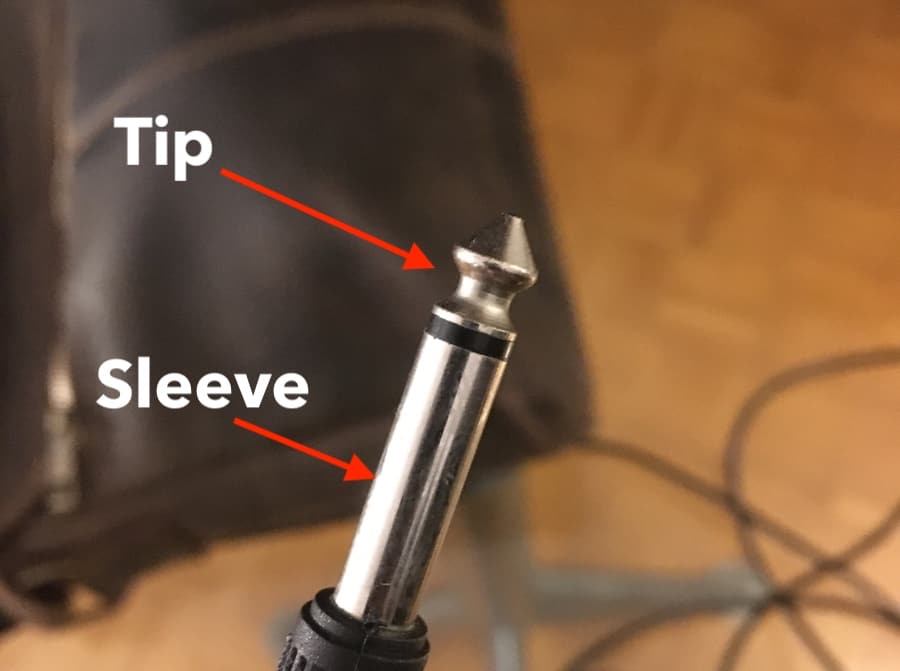
It means "Tip and Sleeve," because there is just the main wire as well as the shield, which also ways the cable signal is mono.
Explained in another mode, the signal travels through the master wire whereas the shield that comes with it acts as a ground to endeavour and minimize noise from the environs.
Unbalanced cables tend to be less sophisticated, just on account of the fact information technology doesn't have the extra wire, unbalanced cables are more susceptible to dissonance and other issues, specially when they first getting longer.
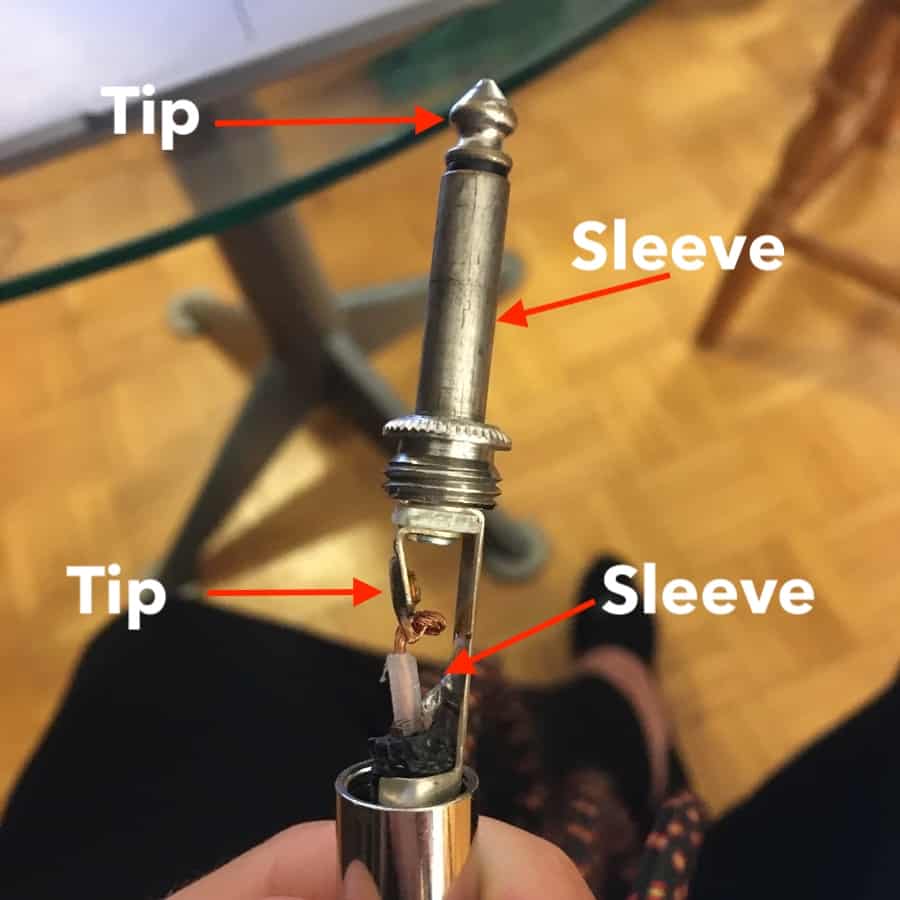
For that reason, guitar cables and other unbalanced cables are typically much shorter.
What Is A Balanced Cablevision?
A balanced cable is dissimilar due to the add-on of an extra wire. They are also called TRS, or a "Stereo Cablevision."
A balanced quarter-inch cable has a dissimilar tip than an unbalanced cable, because rather than having a TS tip to it, (a tip and sleeve), it has a TRS tip, which ways "Tip Ring and Sleeve."
Permit's talk a little bit more nigh this.
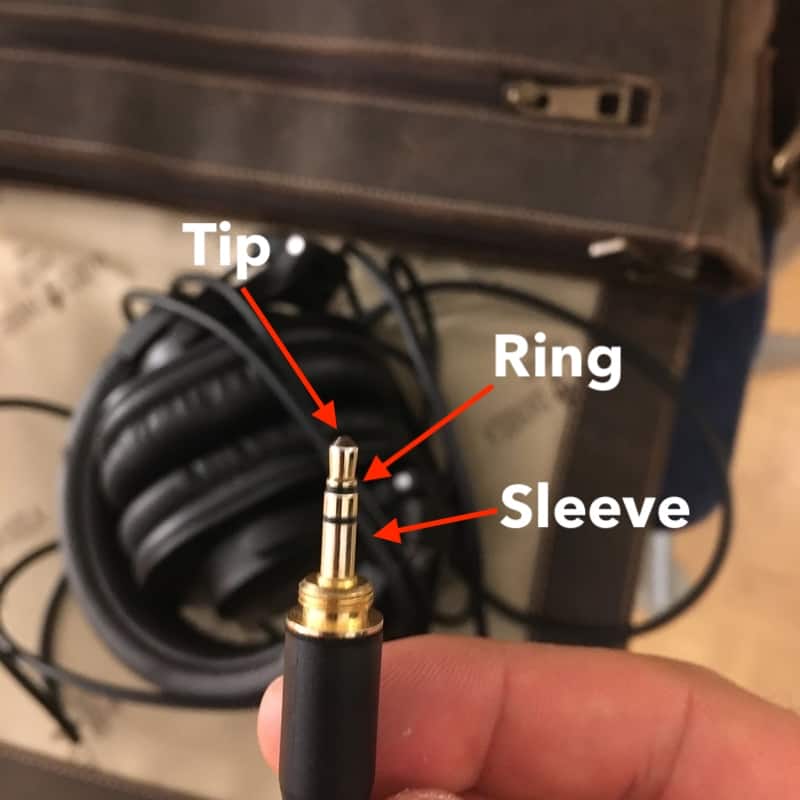
As I merely mentioned to a higher place, a balanced cable has two wires and a shield, one that connects to the terminate of the cablevision, the other to the ring, and so the shield which connects to the sleeve.
TRS cables, like an XLR cable, are stereo signals, which means they have a right and left channel.
A balanced TRS cable has a footing, a positive channel (hot), and then a negative channel (cold). Both channels, or "legs," carry the same point just in opposite polarity.
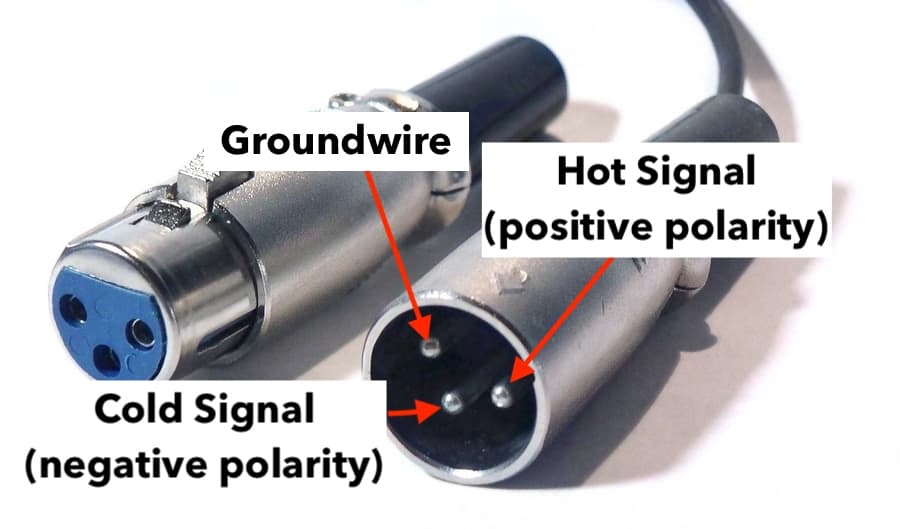
The dissonance that'south picked upward in a counterbalanced cablevision will travel along both wires, the positive and the negative wire, however, if the destination is balanced, then the receiving device will actually flip the i signal and put the two signals into polarity with each other.
The effect of this is for the two signals to exist out of phase with each other, which ends up eliminating the racket. There's a special term for this, it'due south called "Common Mode Rejection."
To eddy down what'southward happening here in layman's terms, a balanced cablevision has two wires carrying the same indicate which end upward canceling each other out, nonetheless, the noise is the only thing eliminated.
The noise counterfoil effect is what makes balanced cables really great for super long cables. XLR cables and TRS cables are used for the sake of sending balanced audio from one cease to the other.
They're typically used for things similar microphones, or for connecting to a mixer.
A TS unbalanced cable can be around 25-anxiety long, simply TRS cables, too as three-prong cables, can be fifty-fifty longer. It'south possible to use a TRS (three-prong cable) for your electric guitar or bass guitar, all the same, this volition cause unwanted dissonance from your amp.
In that location is a significant difference between counterbalanced and unbalanced cables, and in the diagram beneath, you lot can see what these 2 types of cables tin expect similar.
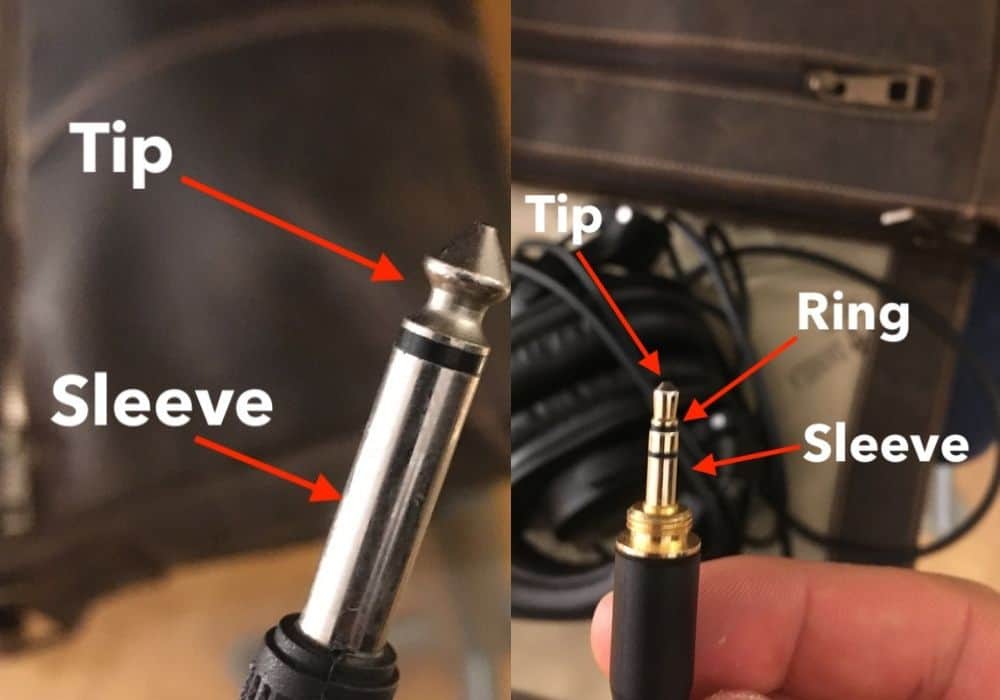
In the prototype above, you can come across the comparing between the two cables. The one cable is the classic guitar cable, and it's unbalanced because of what was explained above, and and then there is the headphone jack type of cablevision, which is balanced.
If you look at the bottom of a 3.5mm auxiliary cable, which is the same cable that's used for headphones, you'll detect there are unremarkably ii crimson (or black) lines around it.
There is the tip of the cablevision, the ring, and then the sleeve.
On the unbalanced cable, there is merely the tip and the sleeve, whereas the balanced cable has two blackness lines on it which shows a tip, the ring, and the sleeve.
Let's move on to explaining the three most common types of cables in the world of audio, the TRS cable, the XLR cable, and the TS cable.
TRS
The TRS cablevision, as I explained above, ways "Tip, Ring, Sleeve," and it looks like the standard plug you'll see on headphone cables and other common cables. In that location are two wires, (or conductors,) plus a ground, or every bit I called information technology above, a "Shield."
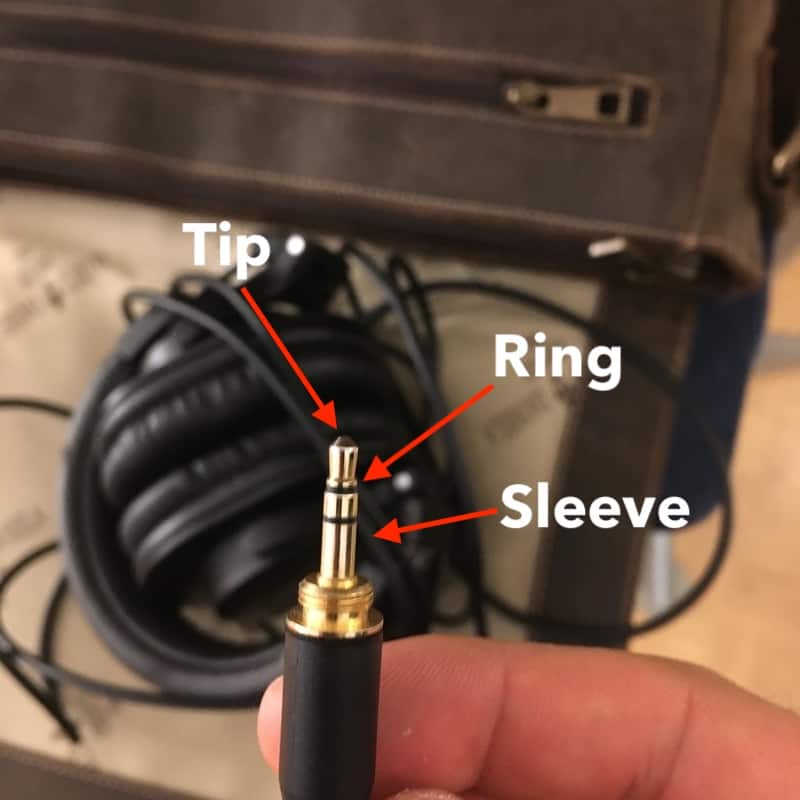
These cables are used for connecting counterbalanced equipment to each other besides as running left and right mono signals to a regular pair of headphones, which tend to be stereo.
Additionally, in the image you can see below, I have taken apart a common pair of TRS headphones, in which the red and blackness wires can be seen as well as the copper ground that comes along with information technology.
Information technology'due south difficult to see, only I hope you can make out the three different wire types in the image below:
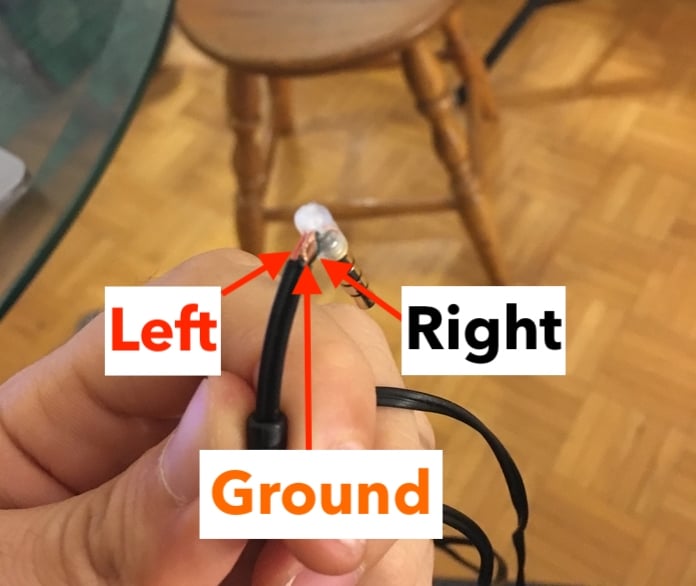
XLR
An XLR cable has within it three connectors, the basis, the negative, every bit well equally the positive, and these are commonly used for sending microphone or balanced-line-level signals in between devices.
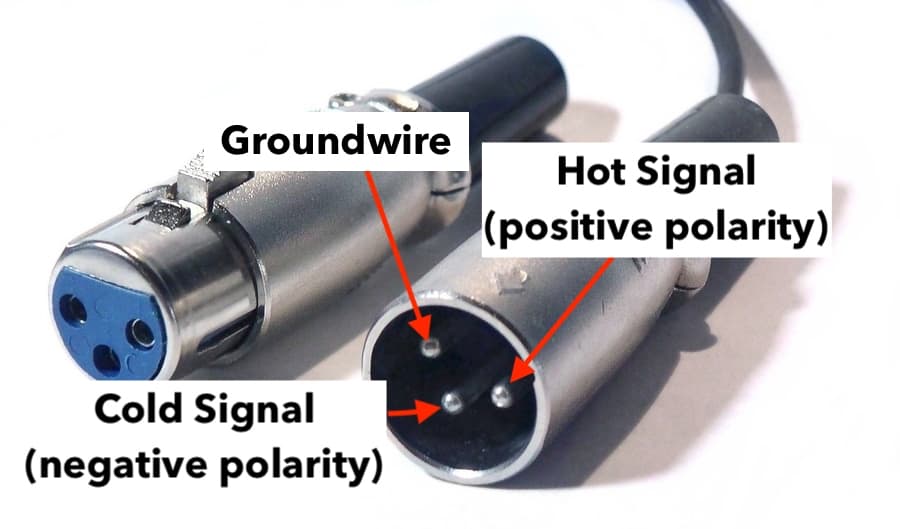
Perhaps the well-nigh mutual use of the XLR cable is for connecting microphones to mixers likewise as audio interfaces. Moreover, they're commonly used for connecting outputs to powered speakers.
TS
The TS cable, the guitar cable, which stands for "Tip, Sleeve," is the 2-usher cable that's unbalanced. There is only 1 ring that separates the tip and sleeve from each other.
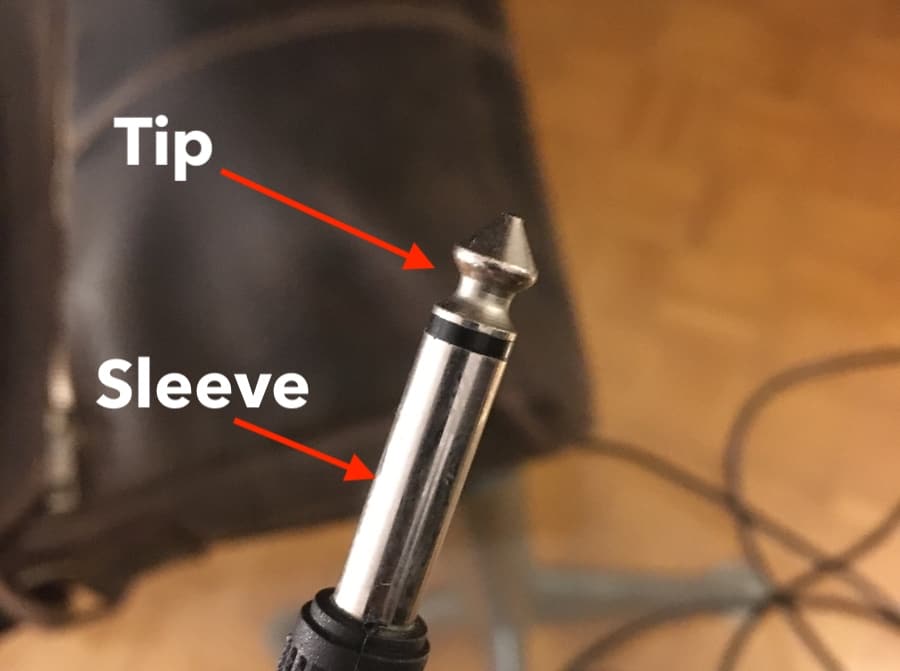
People typically use the term "hot" to refer to the tip of the cable, and information technology's likewise what carries the signal, while the shield/ground is what minimizes the noise.
These cables are well-nigh always used for guitars/basses and other line-level instruments.
Why Not Use Balanced Signals For Everything?
At this point, you might exist wondering why instrument cables don't all only come with a balanced cable unit of measurement if they're then much better and are less susceptible to noise?
There are a few reasons why instruments and other units don't use counterbalanced cables, and it mostly has to do with complication also every bit the cost of doing so.
Creating instruments and other devices that utilize counterbalanced outputs requires more pattern components, and the costs of doing so are typically passed on to the people actually making the purchase, in other words, the consumer.
Frankly, there isn't much demand for them so manufacturers don't even bother making them in this fashion.
In the vast bulk of cases, the regular TS shielded cable volition not be producing enough noise for anyone to hear or care.
Moreover, most individuals will exist plugging into a keyboard or some kind of mixer that doesn't take balanced signals.
Professional studios and other systems that need the highest quality of equipment use plenty of keyboards and other instruments with unbalanced outputs. In other words, information technology'southward not necessary for every cablevision to be balanced.
For about circumstances, you tin notwithstanding get professional quality sound without counterbalanced signals.
Counterbalanced cables are the most common and relevant for things like microphones, because the signal of a microphone is typically much lower, which means they're more than susceptible to noise.
Furthermore, when the pre-amplifier increases the bespeak, the noise volition be increased even more, and then for that reason, microphone cables are counterbalanced to minimize or completely eliminate this problem birthday.
A lot of this has to do with what'due south called the signal-to-noise ratio. A keyboard tens to produce a large output signal, so the signal-to-dissonance ratio is already sufficient. Any of the boosted noise created will be below what most people can hear.
YouTube Video Tutorial
Guitar Cables Are Not Balanced - Balanced Vs Unbalanced
Decision
I hope this commodity was helpful to yous. Do me a solid and post this on your Facebook, Twitter, Reddit, or on Pinterest.
Source: https://travelingguitarist.com/guitar-cables-unbalanced/
0 Response to "Can You Use a Balanced Cable for Guitar"
Post a Comment